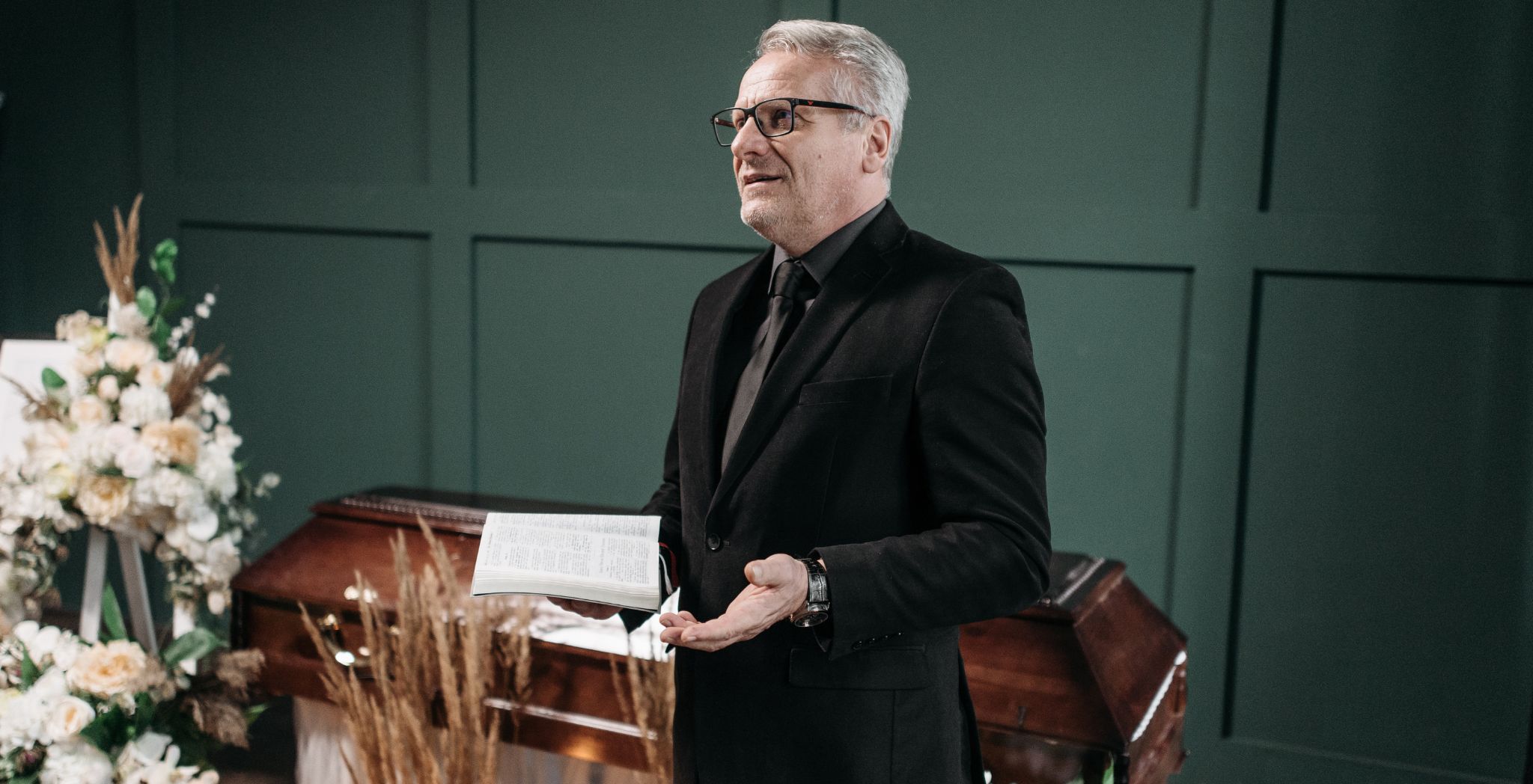
Losing a loved one is undoubtedly one of the most challenging experiences in life. Amidst the grief and emotions, practical matters need attention, such as planning a funeral. In Australia, this process can seem overwhelming, but with the proper guidance and support, you can navigate it smoothly. This guide aims to provide you with the essential information you need when planning a funeral in Australia, focusing on the services offered by Swanborough Funerals.
Arranging A Funeral

Arranging a funeral is a necessary and often emotionally demanding task that follows the loss of a loved one. During this time, it’s essential to approach the process with care and consideration, ensuring that the funeral honours the memory of the deceased and provides comfort to family and friends. Here’s a step-by-step guide to help you navigate the arrangements:
1. Selecting a Funeral Director
The first step in arranging a funeral is choosing a reputable funeral director to assist you throughout the process. Funeral directors, such as Swanborough Funerals in the Logan City area, offer professional guidance and support to help you plan a meaningful service.
2. Consultation with the Funeral Director
Once you’ve chosen a funeral director, you’ll schedule a consultation to discuss your preferences and the deceased’s wishes. During this meeting, you’ll decide the type of service, burial or cremation, location, date, and other arrangements.
3. Choosing a Service Type
Funeral services Logan City can vary widely, ranging from traditional religious ceremonies to contemporary celebrations of life. Consider the deceased’s and family’s beliefs and values when selecting the service that best reflects their life and legacy.
4. Selecting a Venue
Depending on your preferences and the size of the gathering, you’ll need to choose a suitable venue for the funeral service. Options may include a church, chapel, funeral home, or other meaningful location.
5. Arranging for Burial or Cremation
If the deceased did not prefer burial or cremation, you must make this decision based on personal or cultural considerations. Your funeral director is there to help you navigate the available options and make arrangements.
6. Personalising the Service
Adding personal touches to the funeral service can make it more meaningful and memorable. Consider incorporating music, readings, photographs, or other elements that reflect the life and interests of the deceased.
7. Notifying Family and Friends
Once the funeral arrangements are in place, you’ll need to notify family members, friends, and other relevant individuals about the date, time, and location of the service. This can be done through personal calls, emails, social media, or newspaper obituaries.
8. Preparing for the Service
In the days leading up to the funeral, you’ll need to coordinate logistics such as transportation, floral arrangements, catering, and any other details to ensure the smooth execution of the service.
9. Supporting Each Other
Planning a funeral can be emotionally challenging, so leaning on each other for support is essential. Share memories, express feelings, and assist one another as you navigate this difficult time together.
10. Honouring the Memory
Ultimately, the goal of arranging a funeral is to honour the deceased’s memory and comfort those grieving. By planning a thoughtful and meaningful service, you can celebrate their life and begin the healing process as a community.
Immediate Steps

Losing a loved one is a challenging experience, and amidst the grief, there are immediate steps that need to be taken to ensure a respectful and appropriate farewell. Understanding these steps can help you navigate this difficult time more clearly and easily.
1. Notify the Relevant Authorities
The initial action involves contacting the appropriate authorities, like the police (if the death occurred at home and was unexpected), the attending medical practitioner, or emergency services. They will assist with the following steps and guide what needs to be done.
2. Certification of Death
Once the authorities have been notified, a medical professional must certify the death. This is a legal requirement and is usually done by a doctor or a coroner, depending on the circumstances of the death.
3. Contact Family and Friends
Informing family members and close friends of the passing is crucial. This can be done personally, by phone, or through other means of communication. Sharing the news allows loved ones to provide support and make arrangements to attend the funeral or memorial service.
4. Consider the Deceased’s Wishes
If the deceased had expressed any wishes regarding their funeral arrangements, consider these when making decisions. This could include preferences for burial or cremation, type of service, and any specific requests they may have made.
5. Secure Personal Belongings
Ensure that the deceased’s personal belongings are secured and accounted for. This may include items such as jewellery, documents, and personal effects.
6. Contact a Funeral Director
Once the immediate steps have been taken, it’s advisable to contact a funeral director to begin making arrangements for the funeral service. Like Swanborough Funerals, funeral directors can provide guidance and support during this difficult time.
7. Seek Support
Grieving is an inherent part of life’s journey, and it’s crucial to reach out for support from friends, family, or a qualified counsellor. Dealing with the loss of a loved one is a challenging experience, and having a support network can help you cope during this difficult time.
Registration of Death

Registration of Death is a vital step in the Guide to Planning a Funeral in Australia. Upon the passing of a loved one, it’s necessary to register their death with the appropriate authorities. This process typically involves completing official paperwork and providing essential details about the deceased. In Australia, deaths must be registered with the state or territory’s Births, Deaths, and Marriages office within a specific timeframe. By ensuring the timely registration of death, you can proceed with other arrangements for the funeral service with peace of mind. Seeking guidance from professionals like Swanborough Funerals can help streamline this process during a challenging time, providing compassionate support and assistance at every step.
Initial Arrangement Meeting

Following the registration of death, you will need to arrange an initial meeting with a funeral director. Swanborough Funerals offers compassionate and professional assistance during this difficult time. During the meeting, you will discuss various aspects of the funeral, including the type of service, burial or cremation preferences, and any specific requests or cultural considerations.
What You Can Do In Advance

Planning for a funeral may feel uncomfortable, but it can bring peace of mind to both you and your loved ones. Here’s what you can do in advance:
1. Document Your Wishes
Take the time to document your preferences for your funeral arrangements. Think about whether you lean towards burial or cremation, the style of service that resonates with you, and any unique requests you want to include.
2. Communicate with Loved Ones
Having conversations about your wishes with your family and loved ones is crucial. By having open and honest conversations about your end-of-life preferences, you can make sure that your wishes are known and respected when the time comes.
3. Research Funeral Providers
Take the time to research funeral providers in your area, like Swanborough Funerals. Look for reputable companies with a record of compassionate service and transparent pricing.
4. Consider Pre-Payment Options
Some funeral homes offer pre-payment options, allowing you to secure your funeral services at today’s prices. This can provide financial peace of mind for you and your family and alleviate the burden of planning and paying for a funeral in the future.
5. Organise Important Documents
Gather important documents, like your will, life insurance policies, and any pre-arranged funeral plans. Keep these documents in a safe and accessible place, and ensure that your loved ones know where to find them when needed.
6. Review and Update Your Plans
As life unfolds, circumstances can shift unexpectedly. Therefore, it’s crucial to periodically revisit and revise your funeral plans. Make sure to adjust them as needed to align with your current wishes and situation.
Conclusion
In conclusion, planning a funeral for a loved one in Australia involves several essential steps, from immediate tasks like registering the death to arranging the funeral service itself. Swanborough Funerals offers compassionate support and guidance throughout this process, ensuring your loved one receives a dignified farewell that reflects their wishes and honours their memory. By understanding the process and seeking assistance, you can navigate this challenging time with care and compassion.
 "/>
"/>
